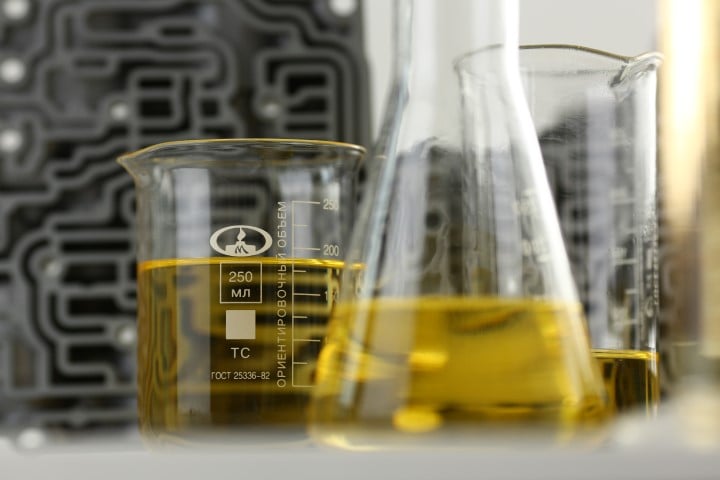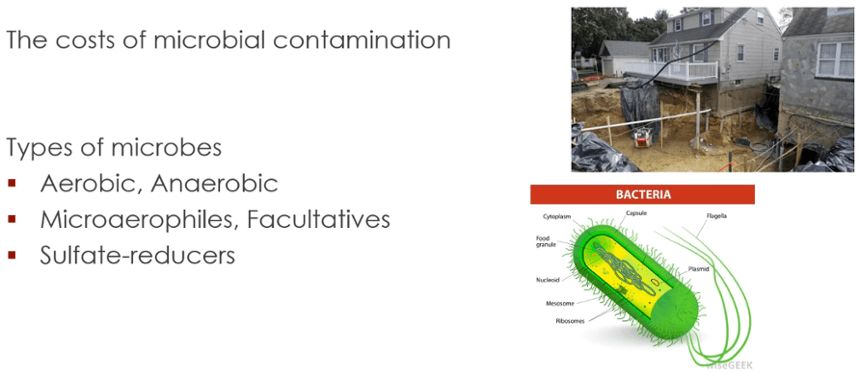Minor Things That Speed up Fuel Contamination
When we think of diesel fuel contamination, we consider different broad categories of contaminants. Sludge and biomass are considered soft...
4 min read
Erik Bjornstad : Oct 12 2021
Whether you're talking about a farm fuel tank or any other kind (even home heating oil), it’s safe to say that any time you find “sludge” or biomass, you've also got microbial contamination. Biomass, also called biofilm, is a general term used to describe the biological by-products that microbes like bacteria, fungus and molds produce during their life cycles. “Sludge” is a general term people use when they find dark “stuff” in the bottom of their tanks or in their fuel filter. When you find either of these, it’s important to do something about them because they can play a larger role in fuel and tank problems than you might want to think.
The conventional logic from fuel professionals for years has been that since microbes need free water to grow, you’d find the most microbial activity at the interface between the fuel layer on top and the water layer on the bottom. If you’re talking about the “most” activity, then that’s generally true. But it’s not the only place you’ll find microbial communities thriving in a tank, nor is it the only place to be concerned about. Plenty of microbes can be find in any layers of biofilm and “sludge” that you may find.
Lets' look at the issue a different way. Whether you’re looking at a tank on a farm or at a commercial fleet, if they had their choice where would microbes most like to live in fuel storage tanks? Is it always at the fuel-water interface? No, actually microbes most prefer to live on solid surfaces behind a layer of biomass.
Remember a couple paragraphs ago, we said microbial communities. Crack open your operation’s fuel storage tank and look more closely at the biomass or biofilm deposits that you’ll inevitably find in certain places. In fact, to borrow a mental exercise, shrink yourself to a microscopic size and go deeper, into the layer of sludge and biomass that’s in there. You’ll find that what looks simple on the outside is far from simple on the inside. Biofilm is a really complex structure that houses thousands of different kinds of microbes. And they’re all coexisting symbiotically with each other, meaning that they all help each other grow and thrive. It’s a whole ecosystem living in your farm’s fuel storage tank. It’s no wonder microbes prefer to live in and behind sludge and biomass. They can thrive a whole lot more than they would if they were stuck out in the open.
So if you've got sludge and biomass, you've got microbial contamination. The only question remaining is whether they've already caused problems or if it's just a matter of time.
The most pressing reason why sludge, biofilms and biomass need to be removed from farm fuel storage tanks is they offer protection to microbes and keep biocides from working properly in the tank. Bacteria and other microbes like to live in and behind biofilm formations because they offer a protective shield from the action of biocides.
The best practices for treating microbial contamination in farm storage tanks are to add the recommended dosage of biocide to the fuel. Biocide will kill microbes when it comes into contact with them. However, biocides can have problems penetrating sludge and biomass formations. If the biocide can’t come into contact with the microbes, it can’t kill them.
If you’ve ever treated farm fuel with biocide and thought you had eliminated microbial contamination, only to have the problem come back in a couple weeks, this is likely what happened. The biocide killed all of the microbes it could get to, but the microbes in and behind the biofilms in the system were protected and simply reinoculated the system at a later time (like when a future fuel drop dislodged some of the biofilm).
So the best practice now is to have sludge and biomass removed (or use a sludge/biofilm dispersant that helps break up the formation) before adding biocide.
Another reason to clean out sludge and biomass from farm fuel storage tanks can be critical to the tank’s long term health. Not only do biofilms hide and house damaging microbes, they can be a key link to tank corrosion. This can happen in a couple of ways.
First, they help the formation of electro-potential gradients. Electrons will move across the tank surface, and when there’s sludge or biofilm on top of the tank’s metal surface, a gradient (a difference in electrical potential that causes electrons to move from one place to the other) will form. Anytime you have this kind of electron movement, corrosion reactions happen more easily and happen in an accelerated manner.
The other way is both sludge and biofilms trap oxygen and can concentrate pockets of oxygen against the surface of the tank. This happens because of the movement of oxygen between fuel and water. Most tanks have both fuel and water in them. Picture an interface of fuel and water in the bottom of a tank. Lots of tanks have this exact kind of scenario. Believe it or not, fuel and water actually dissolve different amounts of oxygen in them – fuel can dissolve 5-10x more water than water can. When you have fuel and water layers next to each other, some of the oxygen in the fuel is going to want to move into the water to try and even out the concentrations – the principle of osmosis at work (things like to move from areas of high concentration to areas of low concentration).
If this happens next to a layer of sludge or biomass, you'll get pockets of oxygen trapped inside, which some kinds of microbes love - a perfect place for corrosion to happen through the formation of acids like carbonic acid.
The takeaway here for the health of your farm fuel and storage tanks is that it’s important to have them cleaned on at least an annual basis. And if you suspect that biofilms have taken root in your tank, it's bad practice not to get those taken care of.

When we think of diesel fuel contamination, we consider different broad categories of contaminants. Sludge and biomass are considered soft...
Farms rely on fuel that is clean and free from contaminants. Certainly, it starts out that way when they buy it from, for example, their local co-op....

This summer we hosted a webinar called Condition Monitoring for Stored Fuels. During the webinar we explained what condition monitoring is and the...